
This project presents the comprehensive development of an autonomous miniature fixed-wing aircraft simulation system created in Python. Beginning with fundamental aircraft dynamics and kinematics modeling, the implementation progresses through linear system analysis, autopilot design, and sensor integration with state estimation. The system capabilities expand to include sophisticated path planning and following algorithms, ultimately culminating in the implementation of coordinated formation flying control. Each component builds upon previous developments, creating a complete framework for autonomous aircraft operation.
Kinematics and Dynamics
I developed a quaternion-based dynamic model for a Micro Air Vehicle (MAV) that simulates the aircraft’s motion in response to applied forces and moments. The implementation accurately captures gyroscopic coupling between roll and yaw motions, with thorough validation performed through systematic testing of individual axes and inertial parameters.
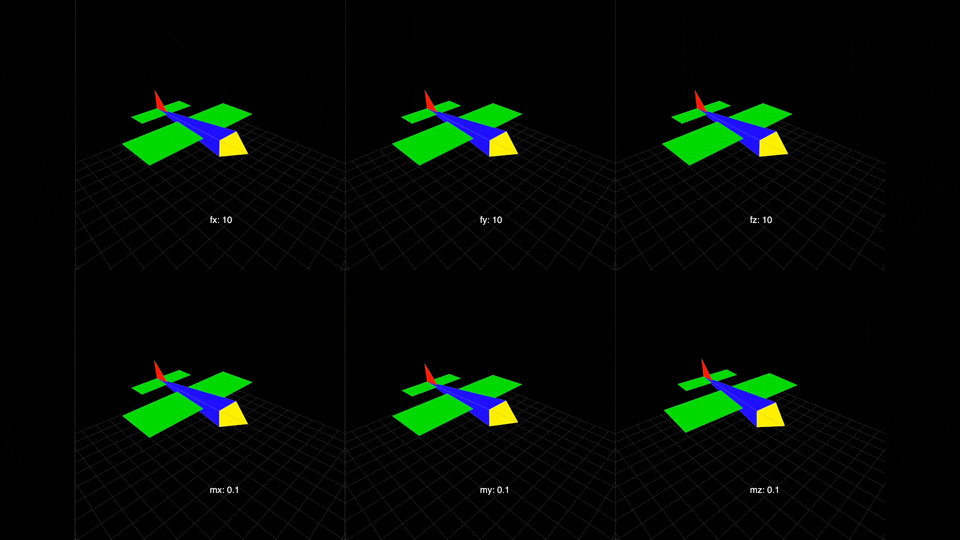
Linear Design Models
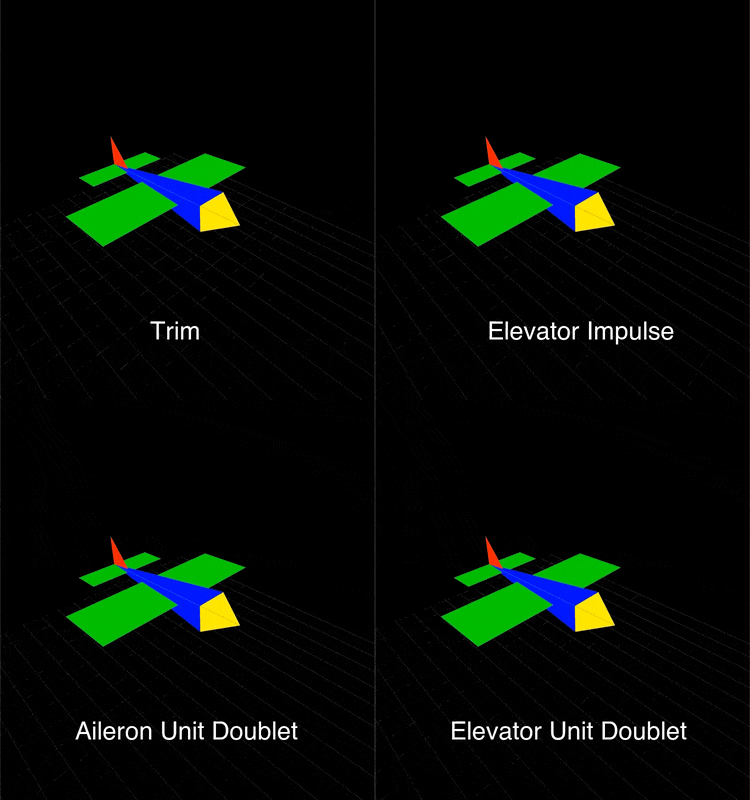
Linear models for the fixed-wing, propeller driven MAV were developed by computing trim conditions and deriving both transfer function and state-space representations. These models capture the aircraft’s response to control surface inputs, including elevator deflections for pitch control and aileron deflections for roll control. The models were validated through simulation testing, demonstrating accurate prediction of aircraft behavior under various control inputs such as elevator impulses and aileron doublets.
Autopilot Implementation
The low-level autopilot system was implemented using successive loop closure, incorporating both lateral and longitudinal controllers. The longitudinal autopilot manages airspeed and altitude, while the lateral autopilot controls the aircraft’s course angle. System performance was validated through extensive testing with various step inputs, including large course angle commands exceeding ±180 degrees.
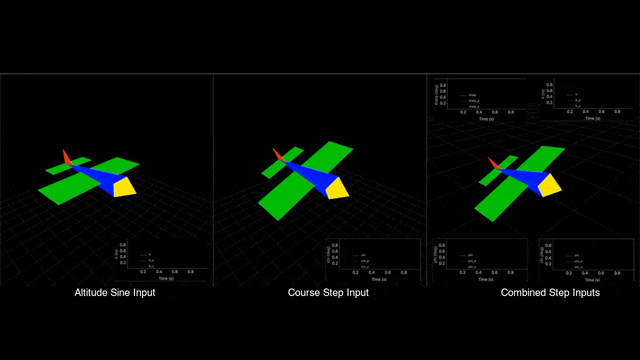
Sensor Simulation and State Estimation
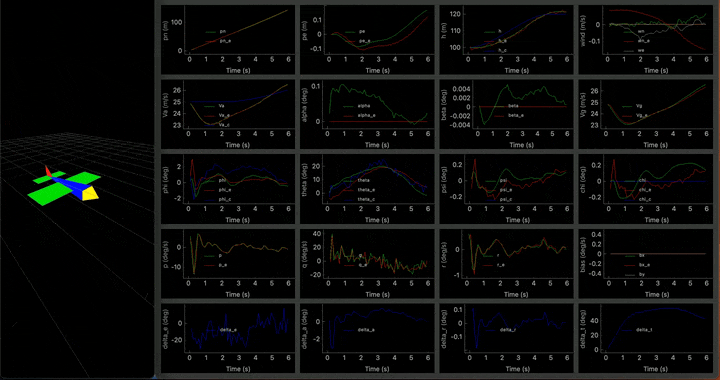
A comprehensive sensor suite was simulated for the MAV, including rate gyros, accelerometers, pressure sensors, and GPS, with realistic noise characteristics and sampling rates. The sensor data was processed through a state estimation framework combining low-pass filters and extended Kalman filters to accurately reconstruct the aircraft’s full state, including attitude, position, airspeed, and wind conditions. The estimated states were successfully integrated with the autopilot system, demonstrating robust performance under realistic sensing conditions.
Path Following and Management
A path management system was implemented to enable autonomous navigation through both straight-line and orbital trajectories. The system handles dynamic path following with robust performance even under significant wind conditions, smoothly transitioning between different path segments while maintaining desired airspeed and course corrections.
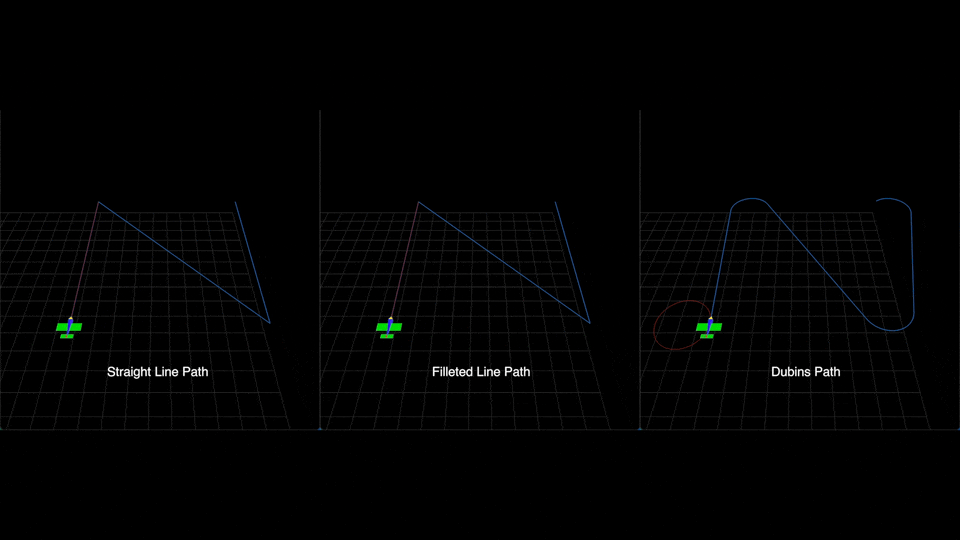
Path Planning
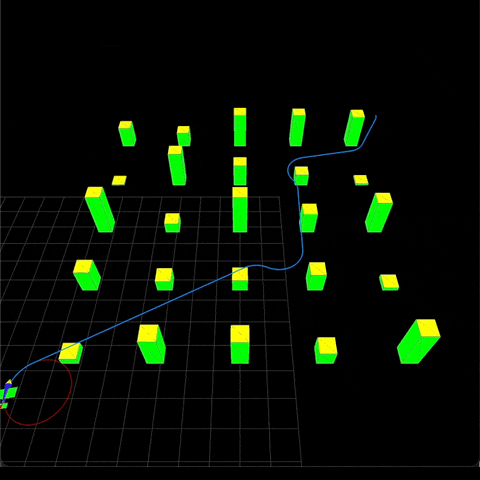
A path planning system was developed using Rapidly-exploring Random Trees (RRT) with Dubins paths to generate smooth, feasible trajectories through obstacle-filled environments. The implementation includes path smoothing algorithms to optimize the generated routes, with successful validation performed on both simplified guidance models and the full aircraft simulation.
Final Project
A formation flying control system was developed using vector field path following and velocity proportional control. The system enables precise maintenance of relative aircraft positioning through a combination of lateral path offsets and longitudinal speed adjustments. When following curved trajectories, the controller automatically compensates for different path lengths by adjusting individual aircraft speeds, allowing for robust formation maintenance during both straight and orbital flight paths.
